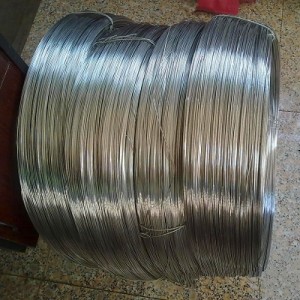Feasibility of GTA method on welding of alloy 400 and 304
Different welds of Monel 400 and Stainless steel 304 are extensively used in the chemical, petrochemical and nuclear industries that need resistance to heat and corrosion, tolerance for heat cycles and creep and supreme mechanical characteristics. Beside of these needs, the different welds offer saving in new and costly materials. Monel alloy 400- SS 316L joints were used for handling high pressure oxygen gas for service. Various combinations of alloy 400 and low carbon steel have been used in oil gasification units where the weldments are susceptible to high temperature corrosion. The behaviour of alloy 400 and SS 304 weldments subjected to the elevated temperature media at 600oC is evaluated.
If the choice of filler wire and welding process is not fit, few weld defects like segregation, phase development, dilution and cracks will develop in the weldment. The selection of filler materials for dissimilar welding of the samples were depending on the hardness, thermal fatigue resistance and resist hot cracking. The welding of unlike metals, the navigation of elements is a major concern that influences the mechanical, metallurgical and corrosion characteristics of the different weldment.
The welding of Monel 400 and stainless steel 316 has several applications in the different engineering sections. To evaluate the mechanical characteristics of the dissimilar weldments, the damage noticed at the stainless steel 316. The weldments had received large magnitudes of the plastic deformation added for the ductile form of damage.
The average tensile characteristics attained from the studies include the tensile strength and ductility. The alloy 400 described the availability of significant magnitudes of nickel, copper and niobium. In the weld region, the availability of nickel, chromium, iron, niobium and molybdenum was discovered to be in significant quantities and heat affected region of AISI 316 was discovered to have iron, chromium, nickel and molybdenum in rich magnitudes. The dendritic growth was noticed at the weld region.
The full welds of alloy 400 and stainless steel 316 could be received from the welding procedure. The alloying elements like niobium enhance the development of carbides at the solidification end seem to be a suitable method for enhancing resistance in the nickel based filler metals. It was found in the trials that the tensile fracture was noticed at the parent metal of stainless steel 316. The ductility dip cracking is not observed because of the availability of the significant magnitudes of niobium and molybdenum.
The weld region is fully austenitic that could even recommend the MGBs by other researchers. It is also inferred from the hardness analyses that the weld zone has the highest hardness as compared to the weldment regions. This could be featured to the availability of phases like NbC that normally pinned the grain boundaries and offer mechanical locking hence avoiding the grain boundaries. It could be featured to the wider hardness retaining in the weld region because of the feasibility of the metallic carbides that improved the strength of the weldments.
Overall the use of GTA welding method is applicable for welding of Monel 400 and SS 316.


